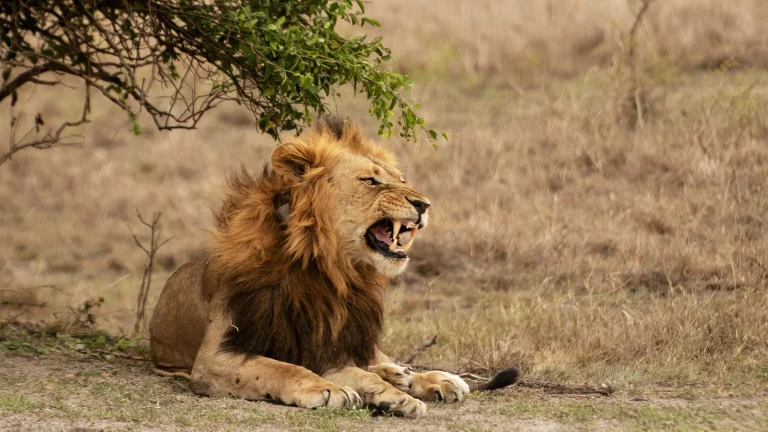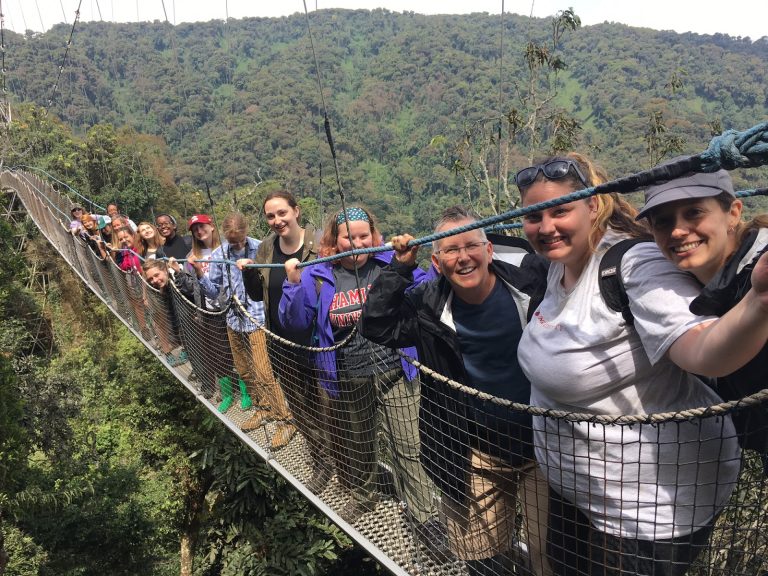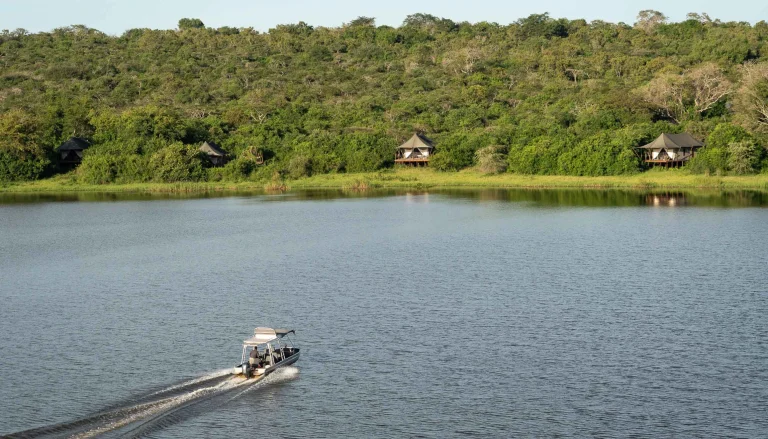- Blogs & Tips
Lions of Akagera
- Last updated: 5 months ago
- By Editorial Team
Lions of Akagera – Rewilding Rwanda’s King of the Savannah
There’s a moment in Akagera when everything slows—until a lion breaks it. You hear it first in the air, a soft rumble that expectantly resonates across the grassland. Then you see the coat: tawny, edged with dusk’s burnt gold, muscles rippling beneath. And suddenly, the park shifts. Nothing else matters. The silence becomes sacred.
That’s the power of the lions of Akagera—they carry presence. They were gone once, reintroduced to restore balance. Today they stand as proof that Wild can return, that careful guardianship can heal. With Friendly Gorillas Safaris guiding you, tracking them isn’t just a tick on a checklist. It’s a living narrative—of disappearance, return, and quiet triumph.
A Proud Return
Lions once roamed all across Rwanda. When the park closed during conflict, they vanished. For two decades, Akagera lacked these apex predators. Their absence was more than ecological—it felt like something essential had gone missing.
Starting in 2015, conservationists carefully reintroduced lions from South Africa and Tanzania. Seventeen individuals first stepped back into the park. By 2019 they were nineteen strong. Today, small prides lounge beneath acacia trees, stalk through papyrus pockets, hunt on open plains, and protect their territory. It’s not just wildlife—it’s a story of renewal.
Friendly Gorillas Safaris arranges intimate drives into the heart of their territory. With local ecologists behind the wheel, guiding you through sunset light to lion pride. You don’t chase. You wait. Let the lion choose when to show itself, safe in the knowledge this land chose them back first.
Where to Find Them
Unlike dense forests, lions need space. And in Akagera, they’ve claimed the savannah. They crisscross in southern zones—near Lake Ihema, across undulating plains, and close to swamp edges where waterbuck gather.
The best time to see them? Early morning or at dusk. In the heat of the day, they rest in shaded grass or dig cool depressions nearby. Friendly Gorillas Safaris schedules drives around their routine. You may find cubs sunning themselves at play, subadults roughhousing, or adults moving with stately purpose toward water.
Each sighting is different. One evening might reveal a male calling out to his pride. Another morning could show a leopard lounging only feet away—Akagera holds more than one king. But with lions, you feel the emotion. You lean in. You feel your spine straighten. You remember.
Behavioral Rhythms
Morning light brings life. Lionesses stretch in the grass—shoulders rising, legs extending—then take off. They hunt early, matched to the movement of prey. Zebra and impala gather at dawn. The hunt begins. With unnerving stealth, lions close ground. Their movements are a study in intent. Head low, paws soft. A pause. A burst.
Evenings are quieter. A pride regathers after a day apart. They groom each other. Cubs rub bellies playfully. One yawns wide, tongue red-dusted, teeth catching the fading light. A night come clear, a male’s roar echoes across the plain. It vibrates through you—a call, a claim, a heartbeat saying, I am here.
Friendly Gorillas Safaris respects their space. Your 4×4 sits still, engine silent, as lions weave through grass. No flash. No invasion. Just you. Just them. And the land between.
Lions of Akagera Pictorial
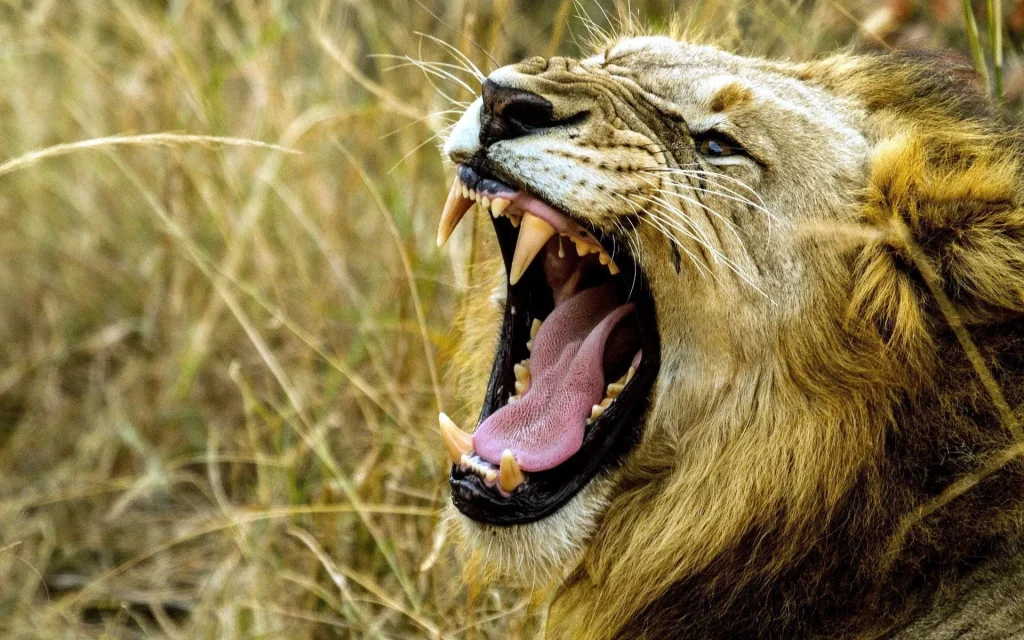
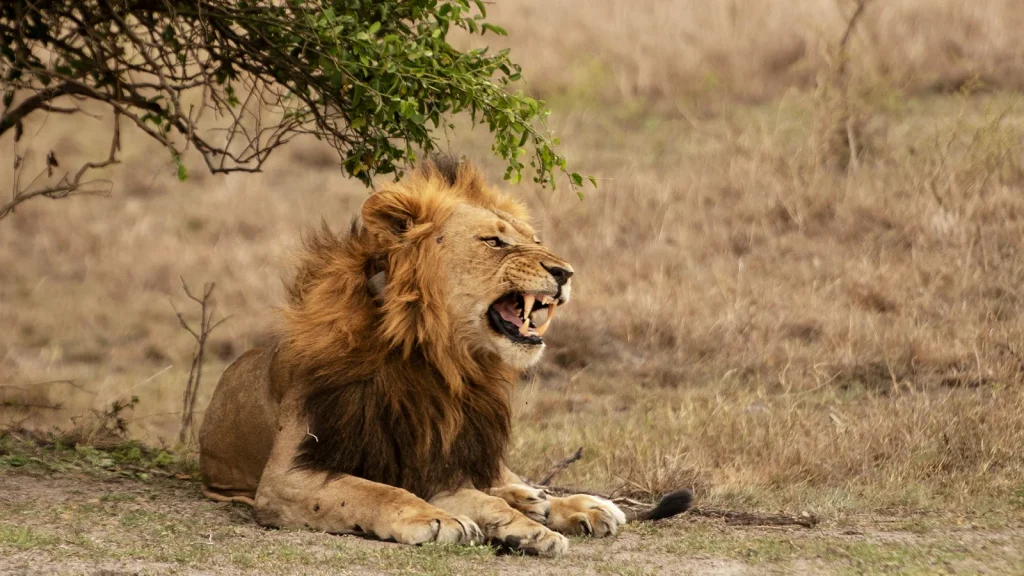
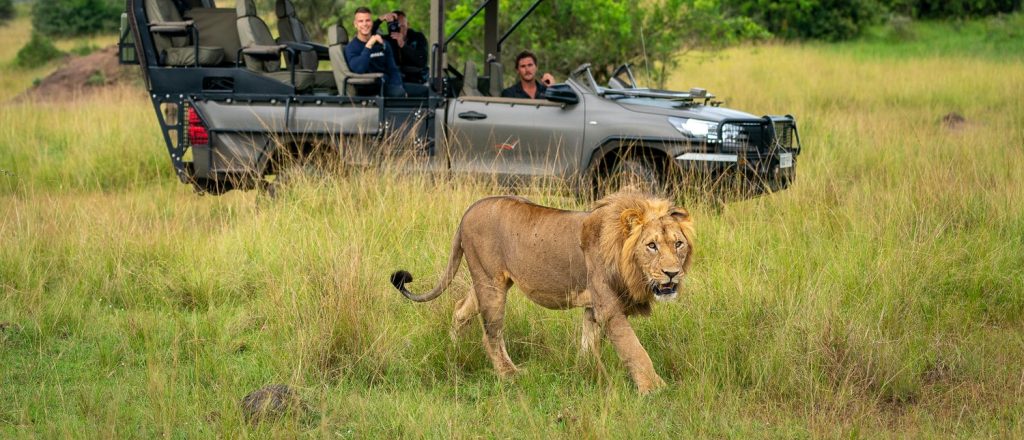
Ecological Importance of Akagera Lions
Lions are more than majestic—they’re keystone species. They shape herbivore behavior, which shapes vegetation, which shapes soil, which shapes the whole ecosystem. Without them, wild landscapes tip out of rhythm. With them, everything returns to song.
Akagera’s recovery has meant small carnivores return, too—hyenas, jackals, otters. Songbird numbers have soared, and the lakes filter clearer. The park is breathing again. And tomorrow’s lions may roam even farther, giving new meaning to Wild.
What Makes Akagera’s Lions Unique
This isn’t the wide-open Sahara. It’s savannah dotted by papyrus and reed. Lions move distantly to water’s edge, stalking hippos in muddy lagoons. They walk paths next to fishermen’s huts.
They sometimes cross paths with Buffalo herds grazing alongside zebras. Lions here share water with crocodiles, elephants, and hippos all traveling their own edges of the day.
Akagera’s lions aren’t big pride spectacles—they’re small, agile, adaptive. They live in canal-lined wetlands as much as golden plains. Sometimes, they even lounge on logs in papyrus swamps. They have survival in their bones—the landscape shapes them and they shape it back.
Tracking Them with Friendly Gorillas Safaris
Nothing happens by chance. We rise early—heat is pride’s enemy, so we hunt before heat rises. We explore places where deeds were seen, footsteps followed, calls answered. And if visibility is low, patience becomes the guide. A cup of coffee beside the track. A quiet story by guide.
Your guide isn’t just a driver. They’re a translator between worlds. They’ll show you where a lioness may have slept the night before. They’ll share stories of conflict and care, of rewilding and resilience. They’ll explain how your visit fits into a conservation mosaic—not tourist for you, but connection.
Some drives include boating near pink flamingos and hippos. Lions cross those same waters. You might finish the day on a boat, watching sunset filter through lion calls across a distance you can’t yet see. That keeps the emotion long after.
Seeing the Pride Through Time
A drive today might show a female guiding three cubs under a fallen tree. Another drive next year can reveal the same cubs now fledged, walking with cautious confidence through rustling grass. Fathers can roam in and out of camps; siblings split across bays; ancestors leave their claim in footprints. These are stories that evolve. With each visit, you witness a chapter in a pride’s life.
And that’s why people return—to watch a lioness raise cubs, see the way pride changes, and feel the continuity of life cycle at its most raw and real.
When to Visit Akagera for Lions
Lion activity peaks just after dawn and in the cooler hours before sunset. Months matter less than moments. The long dry season is forgiving—easy tracks, small crowds, reliable movement. Rainy months call for grit. Roads may slow, but pride path remains. Afternoon thunder can seal the land in hush—and hidden in that hush, a lion may scream its claim.
If you want high chance and clear road—visit Akagera National Park in June to September or December to February. If you want fewer jeeps, more green, and intimate sightings, try March to May or October to November. Either way, Friendly Gorillas Safaris will build your time around those prime windows, adjusting for pride shifts, land changes, and weather moods.
Suggested Packages
How Seeing Lions Shaped Travelers
One couple who came for gorillas added an Akagera drive at the end. They told me later, the lion sighting under those acacias changed everything. They finally understood what grand felt like—the kind that shows you wildness wasn’t lost, just waiting. Another solo traveler said hearing a lion sleep-snort beside the safari vehicle did more for her quiet healing than any sermon or book.
And another family watched cubs play in water. Their daughter laughed when one jumped in and came out dripping paws, and they said it was the kind of magic they didn’t know kids still felt.
These moments are not famous landscapes. They don’t flash grenades. They just erupt gentle. Then stay.
How Lions Shape Akagera’s Story
From being extirpated to rebuilding pride after pride, lions are more than wildlife—they’re hope. They symbolize community will, conservation power, and wildlife resilience. They remind us that even after absence, return is possible. That magic is real. That tomorrow can heal yesterday.
When Friendly Gorillas Safaris offers a lion drive, they’re not chasing lions. They’re hosting a reunion—between land, creature, guide, and visitor. It’s a cultural exchange. Loud or soft, it calls across species.
Final Thoughts
Akagera’s lions are majestic and when you find them, you find a reflection of your own longing—to belong, to witness, to feel small and full at once.
So hear the rumble in the distance. See that royal coat in fading light. Feel your chest expand as they settle near a hippo pool. That’s not a photo. That’s resonance.
Are you ready to meet them? To lean into lion presence and feel the land breathe around you? Let your senses open. Let Friendly Gorillas Safaris guide your way. Because meeting Akagera’s lions isn’t just seeing them. It’s being seen by them.
Send Enquiry
Step into the wilderness Savannah of Akagera and meet the African Big 5 animals and beyond.
Feel the wild stillness of the park where every silence tells a story.
GET A QUOTE
Limited space available.

